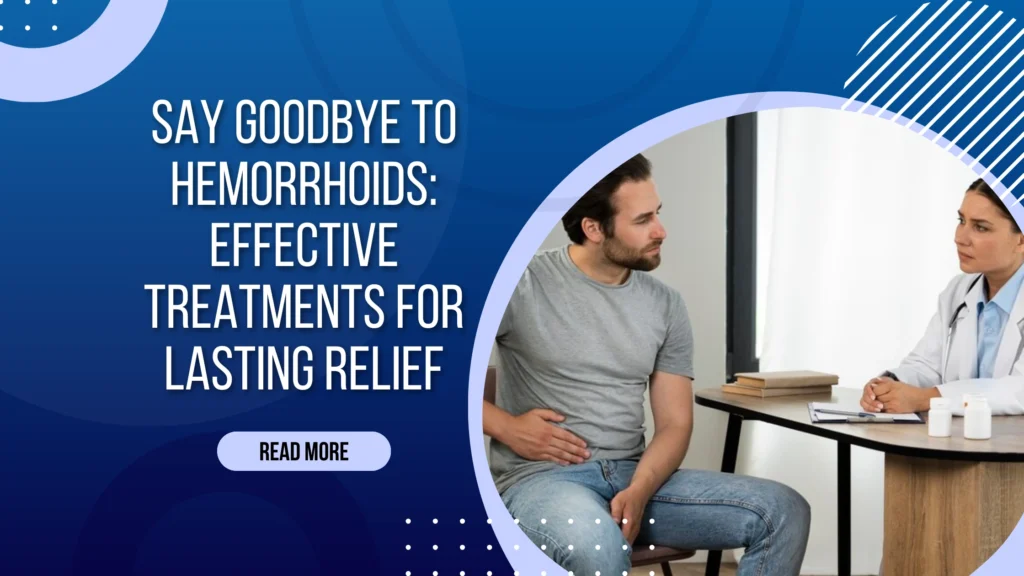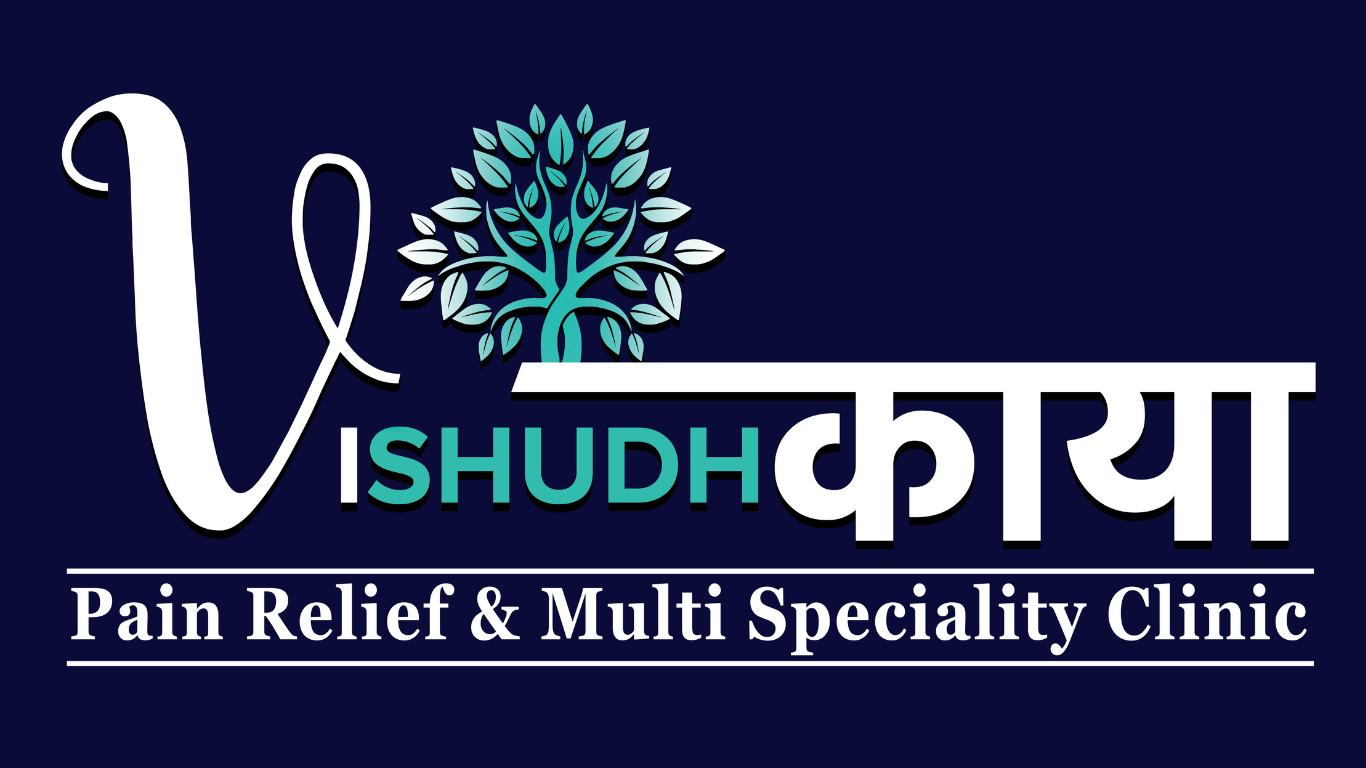INTRODUCTION
Haemorrhoids are characterized by the symptomatic enlargement and distal displacement of the anal cushions, with rectal bleeding being the most common symptom, especially during bowel movements. The condition involves abnormal dilation of the vascular channels and changes in the supporting connective tissue, which are crucial in its development.
The blog suggests that changes in blood vessel function and excessive blood vessel growth (vascular hyperplasia) may be major factors in the development of haemorrhoids. These issues disrupt the normal operation of the anal cushions, causing swelling and displacement. As a result, treatments that focus on regulating vascular function and controlling blood vessel growth could provide more effective and less invasive ways to manage haemorrhoids, potentially preventing further progression and improving patient outcomes.
The term “haemorrhoid” originates from ancient Greek, where it combines the words “haima” meaning “blood,” and “rhein” meaning “to flow.”
Essentially, “haemorrhoid” refers to the condition of blood flowing, which aligns with the swelling of blood vessels in the anal and rectal area that can lead to bleeding, particularly during bowel movements. The condition was first described by Greek physicians, and the term has been used through the ages to describe these swollen veins. Hemorrhoids are a natural condition and were not invented. They have been recognized for centuries, with ancient references from civilizations like Egypt, Greece, and Rome. Greek physician Hippocrates and Roman encyclopedist Celsus were among the first to document the condition and suggest treatments.
Find comfort and relief—take control of hemorrhoids with the right treatments for lasting results.
Haemorrhoids, a widespread anorectal condition, are defined as the symptomatic enlargement and distal displacement of the normal anal cushions. Affecting millions globally, they pose significant medical and socioeconomic challenges. Various factors are believed to contribute to hemorrhoidal development, with constipation and prolonged straining being among the most common causes. The key pathological features of hemorrhoidal disease include the abnormal dilation and distortion of vascular channels, along with destructive changes in the connective tissue that supports the anal cushions.
In addition to these structural changes, inflammatory reactions and vascular hyperplasia are often observed in haemorrhoids, contributing to the clinical presentation. This article reviews the pathophysiology and other clinical aspects of hemorrhoidal disease and further discusses current treatment approaches, only non-operative.
Pathophysiology
The pathophysiology of haemorrhoids involves a combination of vascular, structural, and inflammatory changes that lead to the symptomatic enlargement and displacement of the anal cushions. These anal cushions, which are normally located in the lower rectum, play a key role in maintaining anal continence by providing a barrier to prevent leakage. When these cushions become enlarged or displaced, they result in hemorrhoidal disease.
Key Aspects of Hemorrhoidal Pathophysiology:
1. Vascular Dilatation and Distortion: Haemorrhoids are primarily characterized by abnormal dilation of the vascular channels in the anal cushions. These vessels, which are part of the internal hemorrhoidal plexus, become distended and engorged, contributing to the swelling and formation of hemorrhoidal masses. This vascular dilatation disrupts the normal anatomical and functional integrity of the anal cushions, leading to symptoms such as bleeding and prolapse.
2. Destructive Changes in Connective Tissue: The supporting connective tissue of the anal cushions, which is composed of collagen and elastin fibres, undergoes degeneration and weakening in hemorrhoidal disease. These changes make the tissue less resilient, contributing to the prolapse and displacement of the anal cushions during defecation. This weakening also makes the vascular structures more prone to dilation and distortion.
3. Inflammatory Reaction: In many cases, haemorrhoids are associated with an inflammatory response. The inflammation is thought to be triggered by mechanical irritation or the disruption of the anal cushions during bowel movements, especially in the presence of constipation or prolonged straining. This inflammation exacerbates pain, swelling, and bleeding.
4. Vascular Hyperplasia: Vascular hyperplasia, or the excessive growth of blood vessels, is a key feature in the development of haemorrhoids. This hyperplasia increases the number of blood vessels in the hemorrhoidal plexus, leading to the enlargement and engorgement of the anal cushions. The hyperplastic tissue can be prone to rupture, resulting in bleeding during bowel movements.
5. Disruption of Vascular Tone: Dysregulation of vascular tone plays a role in hemorrhoidal development. Normally, the blood vessels in the anal region can maintain constriction or dilation as needed. In hemorrhoids there is often a loss of this regulatory function, leading to persistent engorgement of the vessels and increased pressure in the anal region.
6. Increased Intra-abdominal Pressure: Increased intra-abdominal pressure, such as that caused by constipation, heavy lifting, or prolonged sitting, can exacerbate the formation of haemorrhoids. This pressure forces blood into the hemorrhoidal plexus, contributing to venous distention and the eventual development of haemorrhoids.
Overall, hemorrhoidal disease is a multifactorial condition driven by both vascular abnormalities and structural weaknesses in the anal tissues, compounded by mechanical and inflammatory factors. Understanding these pathophysiological changes is crucial for developing effective treatments and interventions for haemorrhoids.
Etiology
Hemorrhoids are primarily caused by constipation, which leads to straining during bowel movements. This strain increases pressure on the blood vessels in the anus, causing them to swell and form haemorrhoids. Several factors can contribute to the development of haemorrhoids and increase the risk:
Common Causes and Risk Factors:
1. Constipation: Hard, difficult-to-pass stools lead to straining during defecation, which puts significant pressure on the veins in the rectum and anus, leading to hemorrhoidal swelling.
2. Aging: Haemorrhoids are most common in individuals aged 45 to 65 years. As people age, the tissues and blood vessels in the anal area weaken and lose elasticity, making them more prone to swelling and prolapse.
3. Being Overweight: Excess weight increases intra-abdominal pressure, which can put a strain on the rectal veins and lead to haemorrhoids.
4. Diarrhea: Chronic or frequent diarrhoea can irritate the anal area, leading to inflammation and increased pressure on the blood vessels, contributing to haemorrhoid formation.
5. Spending Long Periods on the Toilet: Prolonged sitting on the toilet increases pressure on the anal veins, which can lead to haemorrhoid formation, especially when combined with straining.
6. Lifting Heavy Objects: Repeated heavy lifting or any activity that causes frequent increases in intra-abdominal pressure can contribute to the development of haemorrhoids.
7. Pregnancy: Hemorrhoids are common during pregnancy due to several factors:
○ Constipation is frequent during pregnancy.
○ The growing baby puts pressure on the abdomen, which in turn increases pressure on the rectal veins.
○ Increased blood volume during pregnancy can cause blood vessels to swell.
8. Genetic Factors: Hemorrhoids can run in families, suggesting a genetic predisposition. Some people may be more likely to develop haemorrhoids due to inherited weaknesses in the tissues that support the anal blood vessels.
Overall, the main cause of haemorrhoids is prolonged pressure on the anal veins, typically from constipation or other activities that increase intra-abdominal pressure. Various lifestyle factors, such as diet, weight, and habits, can influence the development of haemorrhoids.
CLASSIFICATION AND GRADING OF HEMORRHOIDS:
Hemorrhoids are classified based on their location (internal, external, or mixed) and degree of prolapse. This classification helps in determining the appropriate treatment and allows for the comparison of therapeutic outcomes.
Location-Based Classification:
1. Internal Hemorrhoids:
○ Originate from the inferior hemorrhoidal venous plexus above the dentate line.
○ They are covered by mucosa and typically do not cause visible external symptoms.
2. External Hemorrhoids:
○ Located below the dentate line.
○ These are dilated venules of the hemorrhoidal plexus and are covered by squamous epithelium.
○ Often causes pain and discomfort, especially if thrombosed.
3. Mixed (Interno-External) Hemorrhoids:
○ Hemorrhoids that involve both areas, above and below the dentate line.
○ These can exhibit characteristics of both internal and external haemorrhoids.
Internal haemorrhoids are further graded based on their degree of prolapse and appearance:
1. First-degree Hemorrhoids (Grade I):
○ Bleeding occurs, but the haemorrhoids do not prolapse (no visible or external protrusion).
2. Second-degree Hemorrhoids (Grade II):
○ The haemorrhoids prolapse during straining or bowel movements but reduce spontaneously (return to their normal position without manual intervention).
3. Third-degree Hemorrhoids (Grade III):
○ The haemorrhoids prolapse and require manual reduction to return them to the anal canal.
4. Fourth-degree Hemorrhoids (Grade IV):
○ These are irreducible prolapsed haemorrhoids that remain outside at all times and cannot be manually reduced.
○ Acute thrombosed haemorrhoids and haemorrhoids with circumferential rectal mucosal prolapse are also considered Grade IV.
Additional classifications of haemorrhoids are proposed based on anatomical observations or specific symptoms.
1. Anatomical Position:
○ Primary: Located at the typical three sites of the anal cushions.
○ Secondary: Found between the primary anal cushions.
○ Circumferential: Encircles the entire anal canal.
2. Symptomatic Classification:
○ Prolapsing: Hemorrhoids that protrude outside the anus.
○ Non-prolapsing: Hemorrhoids that remain internal and do not prolapse.
Clinical Evaluation of Hemorrhoids –
The clinical evaluation of haemorrhoids involves a comprehensive assessment of symptoms, a detailed patient history, and a careful physical examination. The main goal is to confirm the diagnosis and rule out other potential causes of the symptoms, especially more serious conditions like colorectal cancer.
Symptoms and Presentation:
1. Rectal Bleeding:
○ Painless rectal bleeding is the most common symptom, often described by patients as blood dripping into the toilet bowl.
○ The blood is typically bright red due to the direct arteriovenous communication in hemorrhoidal tissue.
○ Fecal occult blood or signs of anaemia should not be attributed to haemorrhoids until other potential sources of bleeding are ruled out. A thorough examination of the colon is needed, particularly when bleeding is atypical or when the patient has risk factors for colorectal neoplasia (e.g., family history of cancer, older age).
2. Perineal Irritation and Anal Itching:
○ Prolapsing haemorrhoids can cause perineal irritation or anal itching due to mucous secretion or faecal soiling.
○ A feeling of incomplete evacuation or rectal fullness is often reported in patients with large haemorrhoids.
3. Pain:
○ Hemorrhoids themselves typically do not cause pain unless thrombosis occurs, especially in external haemorrhoids or if a fourth-degree internal haemorrhoid becomes strangulated.
○ Anal fissures or perianal abscesses are more common causes of anal pain in hemorrhoidal patients.
Physical Examination:
1. Inspection:
○ A visual inspection of the perianal area is essential to identify signs of haemorrhoids, anal skin tags, or external haemorrhoids.
○ Inspect for perianal dermatitis resulting from anal discharge or faecal soiling, and check for fistula-in-ano or anal fissures, which may also cause symptoms similar to haemorrhoids.
2. Digital Examination:
○ A digital rectal examination (DRE) is performed to assess for abnormalities in the anal canal and surrounding tissues. It helps identify:
■ Abnormal anorectal masses.
■ Anal stenosis or scarring.
■ Anal sphincter tone.
■ Prostatic hypertrophy, which can lead to straining and aggravate the descent of the anal cushions.
3. Anoscopy:
○ Anoscopy in the left lateral position is the gold standard for evaluating internal haemorrhoids. This procedure allows the physician to assess:
■ The size and location of the haemorrhoids.
■ The severity of inflammation and bleeding.
○ Retroflection of the colonoscope or the use of a transparent anoscope with a flexible endoscope can provide an excellent view of the anal canal and haemorrhoids, allowing for high-quality visualization and documentation through photographs.
○ Some physicians prefer the patient to be in a sitting or squatting position while straining, to observe for prolapse during bowel movements.
Key Points to Remember:
● Hemorrhoids are typically diagnosed through patient history and clinical examination.
● Rectal bleeding is the hallmark symptom, but other causes of bleeding must be ruled out, especially in high-risk patients.
● Perineal irritation, anal itching, and feeling of incomplete evacuation are common in patients with prolapsing haemorrhoids.
● Pain usually occurs with thrombosed or strangulated haemorrhoids, not with simple hemorrhoidal swelling.
● Anoscopy and digital examination are crucial for accurate diagnosis, determining the grade of haemorrhoids, and evaluating other anorectal conditions.
MANAGEMENT OF HEMORRHOIDS:
The management of haemorrhoids depends on the severity of the condition, the symptoms, and the classification of haemorrhoids (internal, external, or mixed). Treatment can range from conservative measures for mild cases to more invasive interventions for severe or refractory haemorrhoids.
1. Conservative Treatment (Non-Operative)
For first-degree and second-degree hemorrhoids, conservative treatments are often effective and focus on reducing symptoms and preventing further progression.
a. Lifestyle Modifications:
● Dietary Changes:
○ Increase fibre intake (fruits, vegetables, whole grains) to soften stools and prevent constipation.
○ Drink plenty of water to keep stools hydrated.
● Regular Exercise: Physical activity helps prevent constipation and reduces pressure on the veins in the anus.
b. Medications:
● Topical treatments:
○ Hydrocortisone creams or suppositories: These can reduce inflammation and discomfort.
○ Anesthetic creams: These may relieve pain and itching.
○ Witch hazel or other soothing agents: Applied locally to reduce irritation.
● Oral venotonic agents: These medications strengthen blood vessels and reduce swelling.
c. Sitz Baths:
● Soaking in warm water for 10-15 minutes several times a day can help reduce swelling and soothe the affected area.
d. Avoid Straining:
● Avoid prolonged sitting on the toilet, straining during bowel movements, or lifting heavy objects, as these can exacerbate hemorrhoid symptoms.
e. Stool Softeners and Laxatives:
● In cases of constipation, gentle stool softeners or bulk-forming agents can prevent straining.
2. Non-Operative Procedures (For Second- and Third-Degree Hemorrhoids)
For hemorrhoids that do not respond to conservative measures, or for second-degree hemorrhoids with more significant prolapse, several office-based procedures are available:
a. Rubber Band Ligation:
● A rubber band is placed around the base of the hemorrhoid to cut off its blood supply. This causes the hemorrhoid to shrink and fall off within a few days. This is a highly effective treatment for grade II and grade III hemorrhoids.
CONCLUSION:
In conclusion, hemorrhoids, or piles, are a common and often uncomfortable condition that can affect a person’s quality of life. The causes range from poor lifestyle habits to underlying vascular issues, and the symptoms can significantly disrupt daily activities. At Vishudh Kaya Clinic, we are dedicated to providing a comprehensive approach to treating hemorrhoids, addressing not only the symptoms but also the underlying causes.
We offer a variety of treatment options, including Homeopathy, Allopathy, and Ayurveda, ensuring that every patient receives care tailored to their unique needs. Homeopathic remedies are selected based on individual symptoms and offer a natural, non-invasive approach to healing. Allopathic treatments, including medications, are available for more severe cases that require quick relief and intervention. Ayurveda, with its holistic approach, emphasizes balancing the body’s energies through diet, herbal treatments, and lifestyle adjustments to provide long-term relief from piles.
By combining these diverse treatment methods, Vishudh Kaya Clinic ensures that each patient receives the most appropriate, effective care for their condition, allowing them to experience improved health and relief from the discomfort of haemorrhoids. Reach out to us for a personalized treatment plan and begin your journey toward a healthier, pain-free life.


